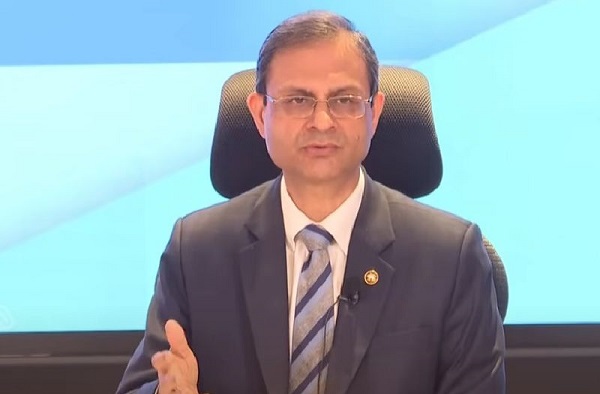.png)

Groupthink is the House View of BasisPoint’s in-house columnists.
July 22, 2025 at 3:16 AM IST
The sharp uptick in the call money rate on Monday to near the repo rate of 5.5% caused some market flutter. Yet the Reserve Bank of India is unlikely to intervene. It will read the episode not as a policy misstep, but as a timely opportunity to correct a growing misapprehension that the overnight rate can permanently settle near the Standing Deposit Facility.
A week ago, banks parked nearly ₹2 trillion in the RBI’s variable rate reverse repo auctions. That positioning misjudged near-term liquidity. With routine GST outflows over the weekend and on Monday, system liquidity tightened and pushed up the call rate. It was a brief storm in a teacup.
But in the rising steam, the RBI may be send a signal.
Crucially, the RBI conducted the 7-day VRRR despite being aware of the timing and impact of GST outflows, suggesting the move was intended as a deliberate signal rather than a liquidity oversight.
For the last several weeks, the call rate had hovered close to the SDF, triggering speculation that the RBI had unofficially eased by 75 basis points in June. This interpretation, based on a 50 basis point repo cut and a 25 basis point offset from WACR hugging the floor, suited bond traders and aligned with the RBI’s quiet liquidity infusion since April. Yet it was always a stretch, unsupported by official policy articulation.
That changed with Governor Sanjay Malhotra’s interview to CNBC-TV18. He was clear that the operating target for monetary policy is the call money rate, not TREPS or market repo. The RBIwants the call rate to stay close to the policy rate, even if that entails friction. Malhotra acknowledged that collateralised and uncollateralised overnight rates move in tandem, but insisted WACR is the anchor.
In recent weeks, the RBI resumed VRRRs to push WACR closer to the repo rate. Monday’s call rate spike is an extension of that strategy. The shift to 7-day VRRRs, instead of the more aggressive 14-day ones, suggests the RBI is rebalancing liquidity incrementally rather than slamming the brakes.
The confusion in markets stems from a six-week gap in communication. As traders came to expect an SDF-anchored regime, the RBI chose not to contradict them. Its stance shift in June made it awkward to walk back that impression. Yet the policy intent remained unchanged. Transmission depends on WACR staying close to the repo rate. Deviations may occur, but will not be indulged.
This clarification matters. With credit growth still sluggish and inflation within range, the RBI wants its 50 basis point easing to transmit fully (cumulative 100 basis points since February). It does not want that signal diluted by misreadings of the overnight rate’s position in the corridor. By letting the call rate spike briefly, it signalled resolve without new action.
In his interview, Malhotra also reminded that call market volumes remain thin. But that does not diminish its signalling role. The RBI has extended market timings and is working to enhance depth. Meanwhile, it sees no need to shift the operating target.
The revision in FBIL’s MIBOR publication schedule from August 4 may sharpen this signalling effort. Based on the recommendations of an RBI-appointed committee, the benchmark will now be calculated using three hours of trading data in the call money market instead of just one. The committee found that around 70 to 80% of daily volumes are transacted in the first three hours and concluded that expanding the window would enhance the benchmark’s representativeness.
As a result, MIBOR may evolve into a more accurate barometer of intraday liquidity and funding stress, reinforcing the RBI’s resolve to keep the overnight rate aligned with the policy rate.
The events of this week should settle the debate. The call rate will not be allowed to drift to the floor. The RBI has sent its message clearly and calmly. Markets would do well to listen.




